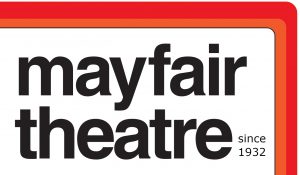His soul's still dancing
ian driscoll on January 27, 2010
This article originally appeared on The Cultural Gutter. You can read it in its original form there.
Spoilers, ho.
HIS SOUL’S STILL DANCING
by Ian Driscoll
In the course of making The Bad Lieutenant: Port of Call – New Orleans, Werner Herzog seems to have discovered how to save Nicolas Cage: let him drown.
Why am I writing about Nicolas Cage again, after effectively writing him off in a previous column?
Maybe because, with his ferocious performance in TBL: POC-NO, Cage has been resurrected for me.
It’s a resurrection that happens onscreen as well as off. The film opens with the camera following a snake as it swims through what turns out to be a flooded precinct jail, where bad detectives Nic Cage and Val Kilmer are taking bets on how long it will take a man locked in one of the cells to drown. Cage eventually abandons the game, though, and jumps in to save the man, at which point the screen goes black.
We catch up with him again some months later, as he’s being promoted from bad detective to bad lieutenant, primarily for saving the man’s life. But he has emerged from the water wracked with chronic pain from the back injury he sustained jumping in – a staggering, lurching Frankenstein’s monster, constantly holding one shoulder higher than the other (a crooked man, walking a crooked mile).
The allusion to Frankenstein is deliberate, and none too subtle. Cage’s lieutenant is, like the monster, reanimated flesh. He is the walking dead.
And if there was ever a city in which to be a zombie, New Orleans is that city.
Herzog’s New Orleans is a drowned city, and even years after Katrina, the (shore)line between land and water is blurry at best. Aquatic reptiles wander everywhere: into jails, as in the film’s opening. Onto roads, as in the sequence where Cage visits the scene of an accident both caused and watched by alligators. And, inevitably, into Cage’s mind, as in the stakeout sequence where he hallucinates lizards: “What the hell are those iguanas doing on my coffee table?”
This is a place where the dead dance. There’s a sequence – the one that people walk away from the film (or even the trailer) quoting, in which Cage tricks a group of drug dealers into shooting a group of gangsters (who are trying to extort money from Cage). When all the gangsters are down, Cage demands that the dealers shoot the lead gangster again. When asked, “What for?” he responds, punctuating his explanation with a gasping laugh: “His soul’s still dancing!”
While the dealers are deciding what to do, we get to watch as the dead man breakdances around his own corpse. It’s a mesmerizing scene, and in the film’s voodoo-inflected setting, it doesn’t even need Cage’s uninterrupted drug abuse to seem plausible.
(Side note: I really wish that scene weren’t in the trailer. It would have been great to stumble across it in the course of watching the film. It would have been a stunning discovery.)
Of course, because this is nominally a police procedural, with Cage investigating a murder, the film also places emphasis on people who speak for, and act on behalf of, the dead. And in the course of the film, acting on behalf of the dead becomes an exercise in just plain acting.
Cage’s performance in TBL: POC-NO is all about acting. That is to say, he’s playing a character who’s constantly acting, pretending, lying. He acts the part of a cop while being a crook. He acts the part of a crook while being a cop. He acts straight when high, dedicated when desperate, confident when utterly lost. He approaches everyone he encounters with a new face (if the same improbable hairline), and fools the audience enough to leave unanswered questions about where his loyalties lie. Is he undercover or under-undercover?
The point is that he never stops performing, within the film or for the camera. He does what it takes to become the bad man for Herzog’s bad world.
And make no mistake: this is a bad world. It does not reward good behaviour. It does not spare the innocent. As Herzog himself puts it in Grizzly Man: “I believe the common character of the universe is not harmony, but chaos, hostility, and murder.”
Of course, like practically everything that comes out of Herzog’s mouth, that’s probably at least part exaggeration and part straight-faced joke. Truth be told, he’s not really interested in the truth.
While he works in both narrative and documentary forms, he eschews the term “documentary,” instead preferring to label his films “fiction” and “non-fiction.” They’re all stories, it’s just that some of them are made up, and others aren’t. Several of Herzog’s films straddle the line, or get to be both: take a look at how his documentary Little Dieter Needs to Fly relates to its narrative remake Rescue Dawn, how the polygraph-buster that is My Best Fiend writes and rewrites personal history, or how Grizzly Man treats the comforting (and sometimes deadly) narratives/lies we tell ourselves.
All of which is to say that, yes, the common character of the universe may very well be chaos, hostility, and murder. But in New Orleans, at least for Nicolas Cage, there’s life after death.
Cut.


